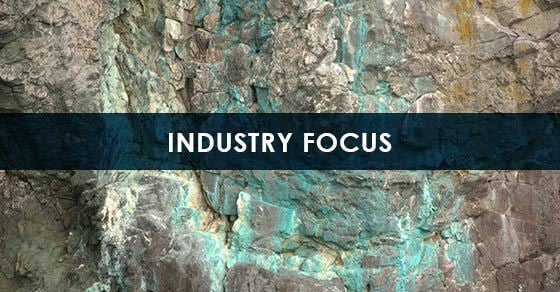The International Energy Agency (IEA) has released a new report highlighting the stark and worrying differences between clean energy ambitions and supplies of critical minerals.
The report, which the agency calls the most comprehensive study to date on the topic, lays out the dangers of not taking immediate action to address the growing gap between clean energy plans and the minerals needed to support them. It also provides six key recommendations to address the discrepancy going forward, with R&D activity being a clear theme.
With a state-of-the-art material testing center, FEECO continues to be a resource for research and development initiatives around improving mineral processing efficiency, recovering waste materials, and more.
The Gap Between Clean Energy and Critical Minerals
The energy sector is well on its way to becoming the primary consumer of minerals, according to the IEA’s report. The minerals required to support the transition to a renewable energy society will be substantial. While this has long been recognized, the report provides a deeper exploration into the realities of the current availability of these materials and how it stacks up to anticipated demand.
The report acknowledges a number of metals critical to the energy transition, zeroing in on:
The report estimates that meeting the Paris Agreement goals would require a quadrupling of the minerals used in clean energy technologies by the year 2040. Anticipated available supply based on existing projects and those under construction for some materials, such as lithium and cobalt, looks to only meet about half of projected demand by 2030. Similarly, supplies of copper could fall short by 20%. The report notes that today’s mineral supply and investment endeavors are based on more gradual and conservative movements, an approach that needs to change if we are to meet our goals in the fight against climate change.
“Today’s mineral supply and investment plans fall short of what is needed to transform the energy sector, raising the risk of delayed or more expensive energy transitions,” the report states. “How policy makers respond will determine whether critical minerals are a vital enabler for clean energy transitions, or a bottleneck in the process.”
Following the IEA report, consultancy firm Wood Mackenzie released a report stating the energy transition would require mining companies to invest $1.7 trillion in the next 15 years in order to meet demand for copper, cobalt, nickel, and more, according to Reuters.
The Recommendations
While the IEA report lays out the challenges ahead, it also notes that these challenges are not something the world cannot overcome. The IEA makes six key recommendations in the report to enable the clean energy transition on a solid and sustainable base of critical minerals. The recommendations are summarized here.
- Ensure adequate investment in diversified sources of new supply. Policy makers and governments need to send a clear message on the pace needed to reach clean energy goals through investment in new supply, while also creating an environment that encourages diversified investment in the mineral supply chain.
- Promote technology innovation at all points along the value chain. Greater efforts are needed in R&D around improving material use efficiency, material substitutions, and more.
- Scale up recycling. Improve each aspect of the recycling process, while also developing new recycling technologies, to encourage greater recycling in preparation of growing waste volumes.
- Enhance supply chain resilience and market transparency. Bring forth policy that derisks the supply chain through various approaches, while also making it more transparent.
- Mainstream higher environmental, social and governance standards. Encourage a higher standard of environmental and social stewardship for responsible and sustainable sourcing, an approach that could also bring new players to the table.
- Strengthen international collaboration between producers and consumers. Create an international framework to foster collaboration on efforts toward reliable and sustainable mineral supply.
R&D Essential in Meeting Critical Mineral Demand
R&D plays a clear and consistent role in closing the gap between mineral supply and demand, whether that means enhancing the recovery of metals from wastes, increasing the efficiency of beneficiation processes, improving recovery during recycling, or otherwise.
With batch- and pilot-scale testing equipment available around agglomeration, drying, and high-temperature thermal processing, the FEECO Innovation Center continues to be a key resource for companies looking to conduct mineral processing research and development.
The facility offers a range of testing capabilities to illustrate proof of concept, proof of product, proof of process, and process optimization. With a long history in waste transformation and material recovery, FEECO has already helped a number of customers to advance their mineral processing projects, with data gathered during testing supporting process scale-up and commercial-scale equipment design.
Conclusion
The growing divide between clean energy ambitions and available mineral supplies is disconcerting, but the IEA says it’s not a divide we can’t bridge. Through enhanced policy and collaboration, as well as increased recycling and R&D, the mineral supply demand could be met, but requires immediate action.
FEECO is a leading provider of custom processing equipment, testing and process development services, and aftermarket support for the mineral processing and waste recovery industries. For more information on our testing capabilities or other offerings, contact us today!

